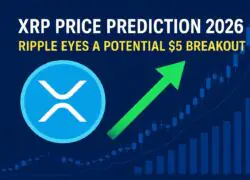Fed spokesperson: The Fed has started a moderate rate cut cycle, and there are huge differences in future decisions
PANews reported on September 18th that according to Jinshi, "Federal Reserve mouthpiece" Nick Timiraos stated that the Federal Reserve approved a 25 basis point interest rate cut on Wednesday, the first in nine months. Officials believe that recent labor market weakness has outweighed the headwinds posed by recurrent inflation. Slightly over half of officials expect at least two more rate cuts this year, suggesting the possibility of consecutive action at the remaining two meetings in October and December. This summary of economic forecasts suggests a shift in policy stance toward broader concerns about cracks in the job market—an environment complicated by significant policy adjustments that have made economic trends increasingly difficult to predict.
Forecasts suggest that future policy decisions could be even more divided: Of the 19 officials present, seven predicted no further rate cuts this year, while two supported only one. Most officials believed that given the current outlook for solid economic activity (even if slowing slightly), further significant rate cuts next year were unnecessary. Fed officials have debated this balance throughout the year. Powell's decision to guide his colleagues toward a rate cut was based on a judgment that inflation risks may be more manageable, and that the Fed should accept more of them to avoid a deeper impact on the labor market.
You May Also Like

Milk Mocha ($HUGS): The Deflationary Meme Coin Turning Weekly Burns Into Investor Gold

Grayscale’s Crypto Large Cap Fund, Including BTC, ETH, XRP, ADA, Gets SEC Approval
